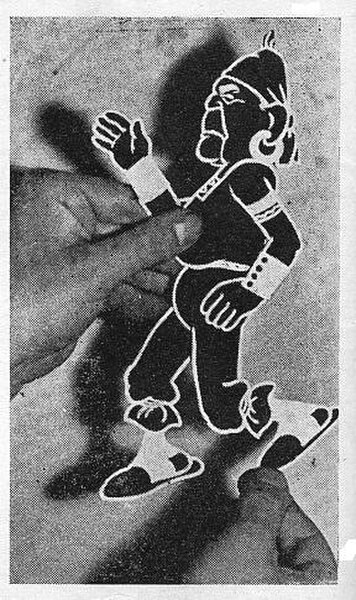Max Fleischer was a Polish-American animator, inventor, film director and producer, and studio founder and owner. Born in Kraków, Poland, Fleischer immigrated to the United States where he became a pioneer in the development of the animated cartoon and served as the head of Fleischer Studios, which he co-founded with his younger brother Dave. He brought such comic characters as Koko the Clown, Betty Boop, Popeye, and Superman to the movie screen, and was responsible for several technological innovations, including the rotoscope, the "follow the bouncing ball" technique pioneered in the Ko-Ko Song Car-Tunes films, and the "stereoptical process". Film director Richard Fleischer was his son.
Fleischer in 1919
Animation is a filmmaking technique by which still images are manipulated to create moving images. In traditional animation, images are drawn or painted by hand on transparent celluloid sheets (cels) to be photographed and exhibited on film. Animation has been recognized as an artistic medium, specifically within the entertainment industry. Many animations are computer animations made with computer-generated imagery (CGI). Stop motion animation, in particular claymation, has continued to exist alongside these other forms.
Italian-Argentine cartoonist Quirino Cristiani showing the cut and articulated figure of his satirical character El Peludo (based on President Yrigoyen) patented in 1916 for the realization of his films, including the world's first animated feature film El Apóstol
A clay animation scene from a Finnish television commercial
World of Color hydrotechnics at Disney California Adventure creates the illusion of motion using 1,200 fountains with high-definition projections on mist screens.




